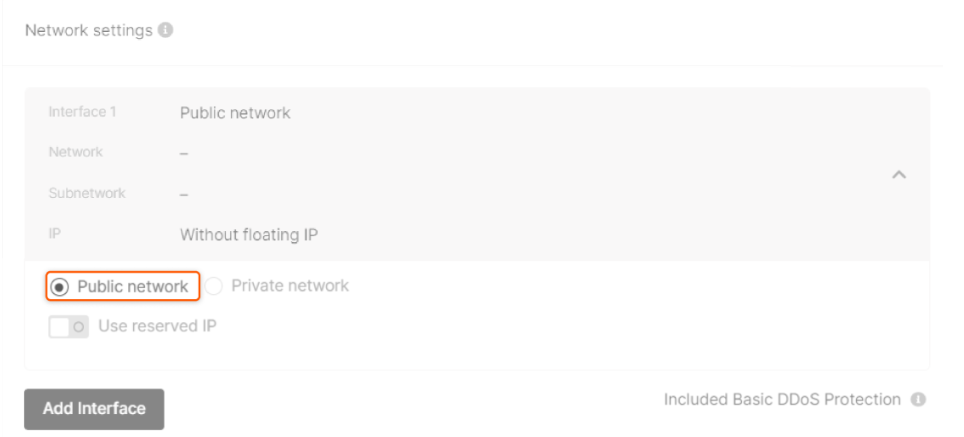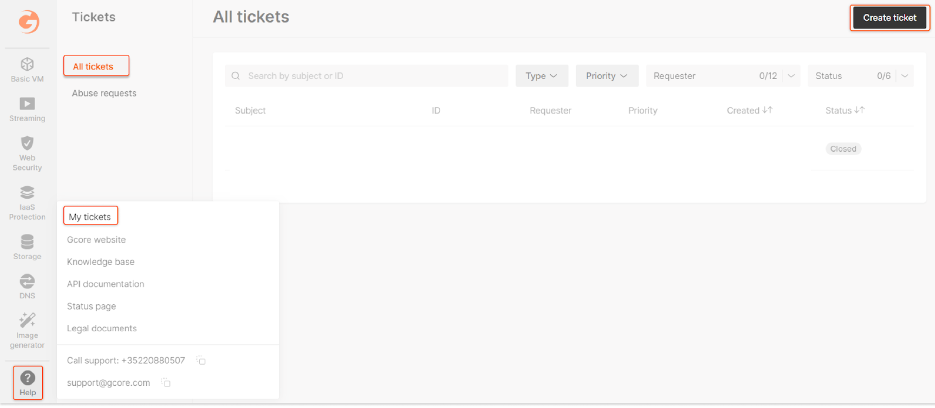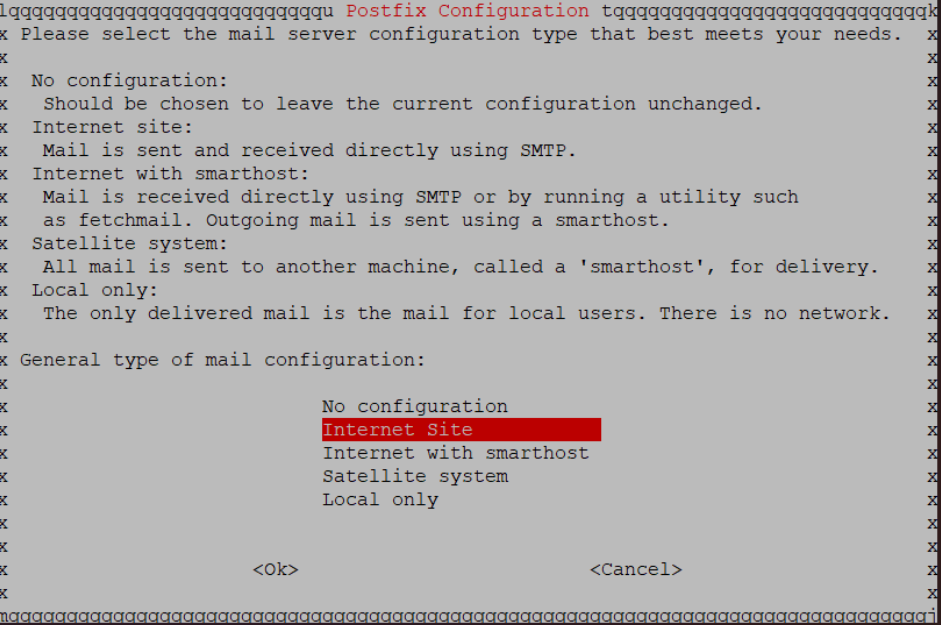- Create an Virtual Machine.
- Check internet access.


- Connect to your Gcore Cloud VM via either SSH or the VNC concole in the Customer Portal.
- Install Postfix.
Internet Site option and enter the fully qualified hostname of your server, then click <Ok>.

- Configure Postfix.
- myhostname : Specify the fully qualified domain name of the Virtual Server on which Postfix is running.
- mydestination : Specify the domains for which mail will be delivered locally instead of being forwarded to another host.
- mynetworks : Specify a list of networks or IP addresses from which mail messages are allowed to be sent through this server.

- Install Dovecot.
- Configure Dovecot.
listen = *, ::.

- Create mailboxes.

- Add DNS records.
- Test and verify.